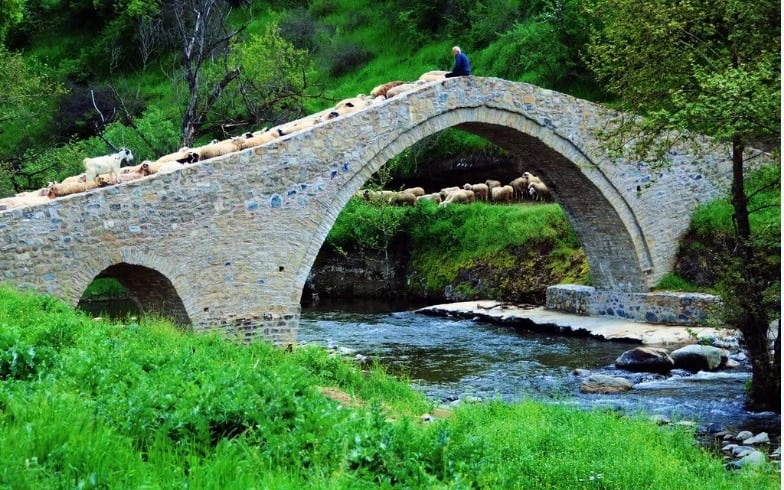
The Municipality of Meteora is a testament to the enduring legacy of historical stone bridges, which serve as living monuments of folk architecture and the human drive to connect.
Built with remarkable skill by craftsmen from Epirus and Pindos, these bridges were vital arteries for communication, trade, and survival in the region’s challenging terrain. They are not merely structures but symbols of local identity and cultural heritage.
Stone bridges at Meteora and their stories
The municipality is home to several significant bridges, each with its own unique history:
Baltas Bridge: Located in Kakopleuri, this is one of the oldest bridges in the region, built in 1403. For over six centuries, it has spanned the Kakopleuritis stream, connecting isolated areas with the city of Kalambaka.
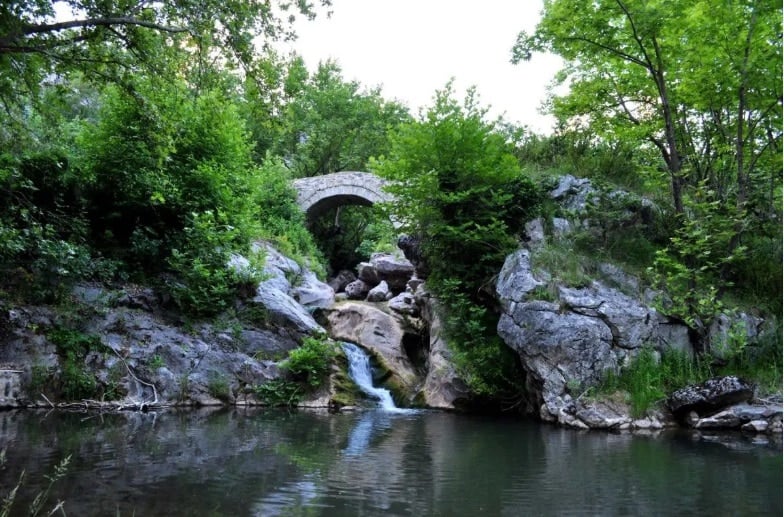
Delis Bridge: Also in Kakopleuri, this single-arch bridge was constructed in 1860. It crosses the Boutzas River, a tributary of the Pinios. Its name is linked to local folklore, with theories attributing its construction to either a Turkish pasha or a charioteer from the Chasia region.
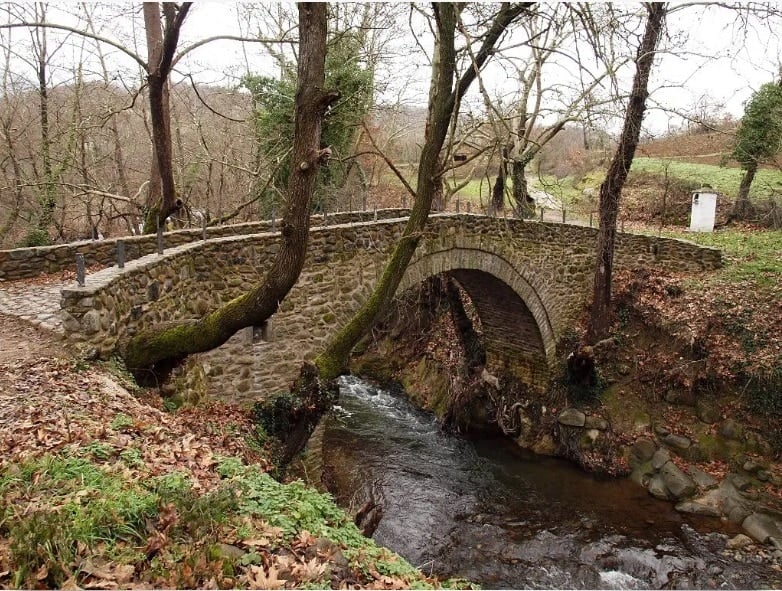
Psyrras Bridge: Erected in 1790 over the Iona River, this single-arch bridge is a prominent feature on Asproklisia Hill. It was a key part of the old road network, linking mountain passes to the lowlands.
Michos Bridge: Built in 1799 in Anthousa Aspropotamos, this 12.5-meter-long bridge marked the beginning of a crucial mule route. It was used by agogiates (muleteers) to transport goods from the villages of Aspropotamos to Tzoumerka.
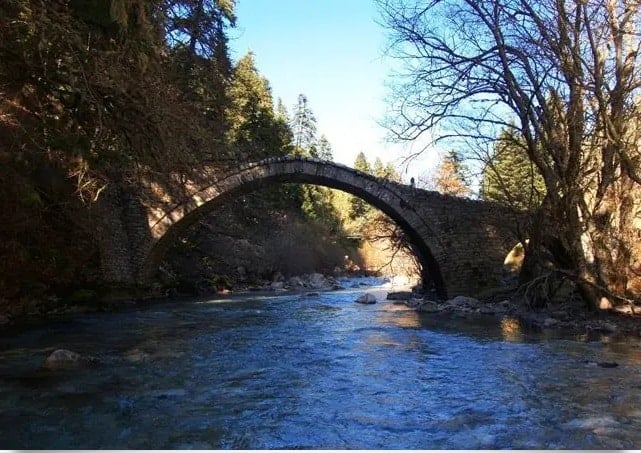
Vakaretsia Bridge: Located in the Xirokampos area, this single-arch bridge over the Bountza stream was a critical crossing for local residents.
Ghika Bridge: This bridge in Krania, likely built in the mid-18th century, is a single-arch structure with unique metal drawbridges added for reinforcement. It was a primary route to the Thessalian plain but was severely damaged by the “Daniel” storm. The Ministry of Culture has since initiated its restoration.
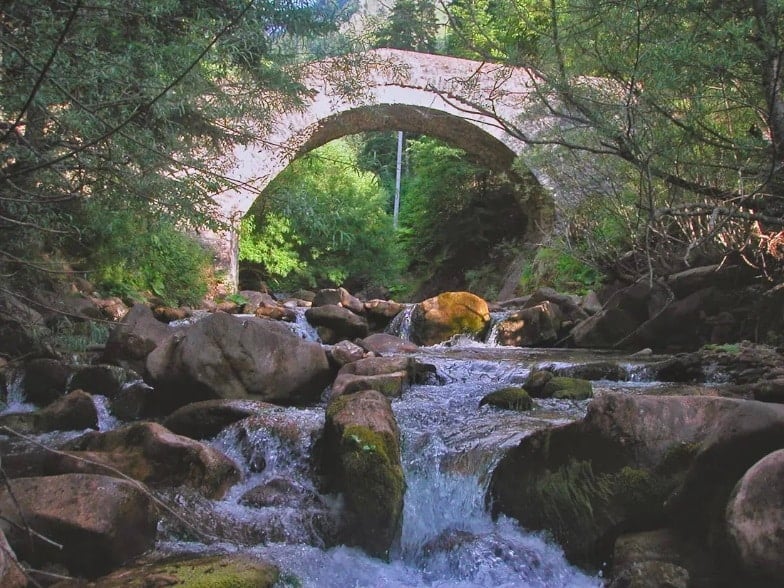
Sarakina Bridge: Perhaps the most renowned of these structures is the Sarakina Bridge, a magnificent seven-arched stone bridge spanning the Pinios River. It was a major link between the wider region and the Thessalian plain. Unfortunately, like the Ghika Bridge, the Sarakina Bridge suffered extensive damage from the “Daniel” storm.
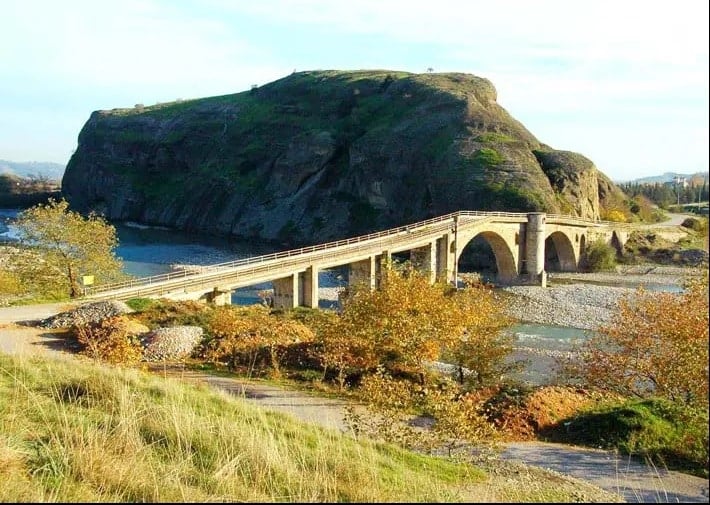
In a recent statement, Meteora Mayor Lefteris Avramopoulos emphasized the bridges’ significance as “living pieces of our history” and “symbols of connection.” He highlighted that both the Sarakina and Ghika bridges are considered monuments of national importance. The Municipality of Meteora is actively collaborating with the Ministry of Culture to secure funding and complete the necessary studies for their full restoration.
The Mayor stressed that preserving these bridges is not only a “debt to the past” but also a strategic investment in the future. Their preservation and promotion through cultural tourism are seen as key levers for sustainable development in the mountainous regions, ensuring that these historical testaments continue to stand for generations to come.


